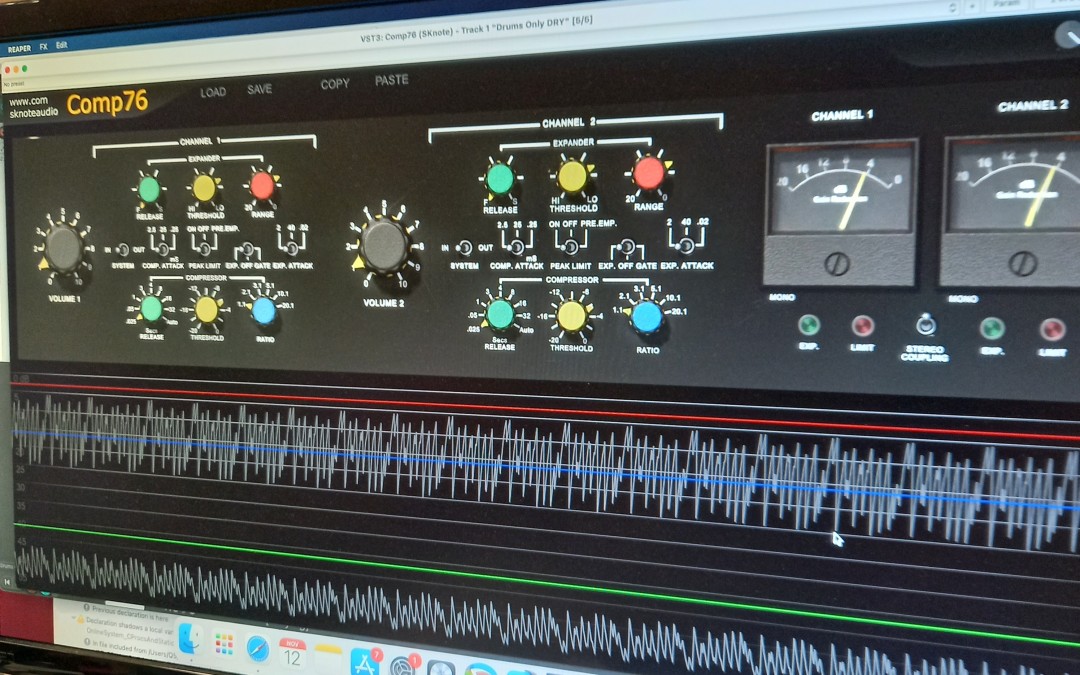Main features:
- FET feedback (smoother) compressor.
- Fast Limiter (combined with compression gives powerful control on peaks).
- Multi-mode Expander-Gate (we departed from the original here and added an upward-expansion option).
- Component-level modelling of circuits (detailed, no sampling).
- Internal oversampling.
While the vintage hardware unit can be complicated to use, we made it simpler by adding a detailed graphical interface and simplified controls. Also, re-arranging the set of controls (how the dynamic aspects are arranged and linked) makes using presets more useful and quick. Define a “window” on the dynamic response by combining Thresholds and Ratios, “move the window” to hit the desired range of the dynamic range.
Comp760 is available NOW as VST/AU for Windows and Mac OSX systems (including Apple-silicon native).
AAX for Windows and Mac OSX systems being released in a few days.
A detailed description.
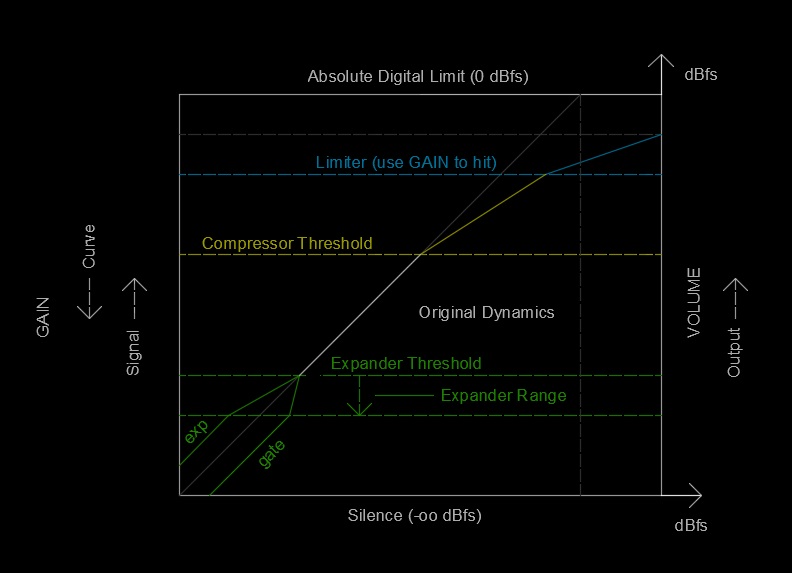
A few details are essential for comprehension of how Comp760 works:
- Limiter’s Threshold is fixed.
- Compressor’s Threshold is set by a control and is defined in relationship to Limiter’s Threshold minus 10 dB.
- Expander’s Threshold is set by a control and is defined in relationship to Compressor’s Threshold minus 20 dB.
By defining relative Thresholds we can “move” the whole setup as a whole and adjust the sound by a single parameter.
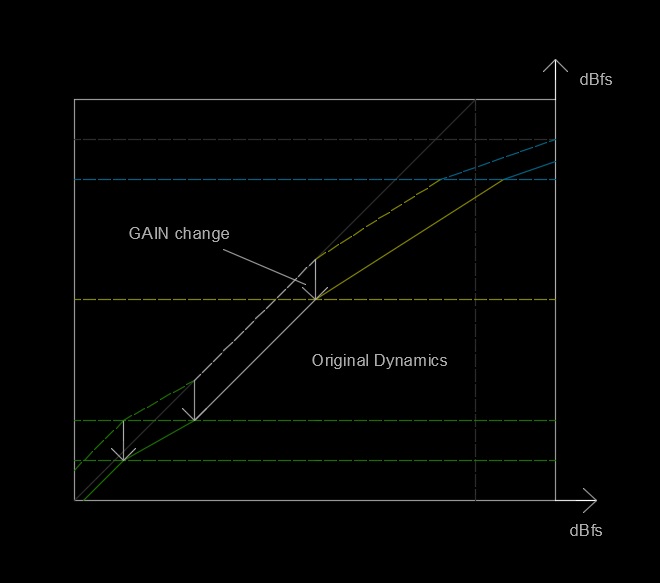
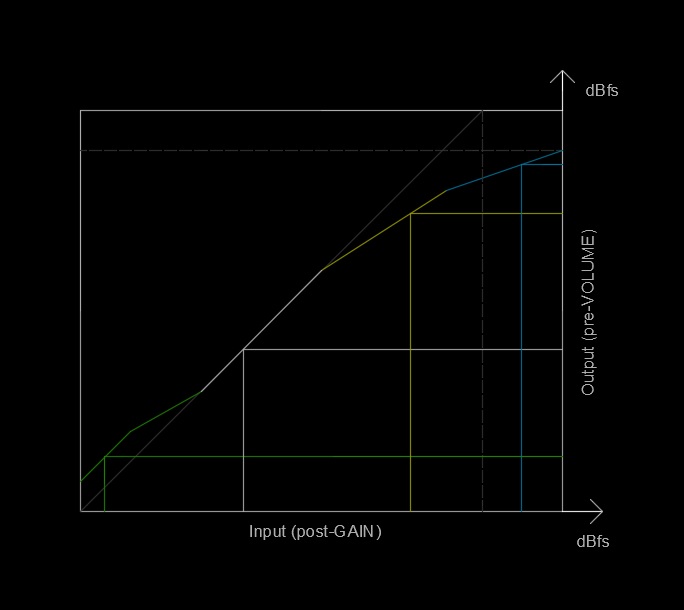
- Low levels can be attenuated (to reduce background noise or to dry-out tails).
- Mid levels are untouched to keep the original feeling.
- Mid-high levels can be compressed to increase the perceived volume, to tame peaks and to give excitement to the sound or simply to reduce level oscillation.
- High levels can be tamed by the Limiter, to prevent the signal from hitting the “absolute ceil”. Or the Limiter can be used to control the height of the peaks passing through a slower Compressor’s Attack setting.
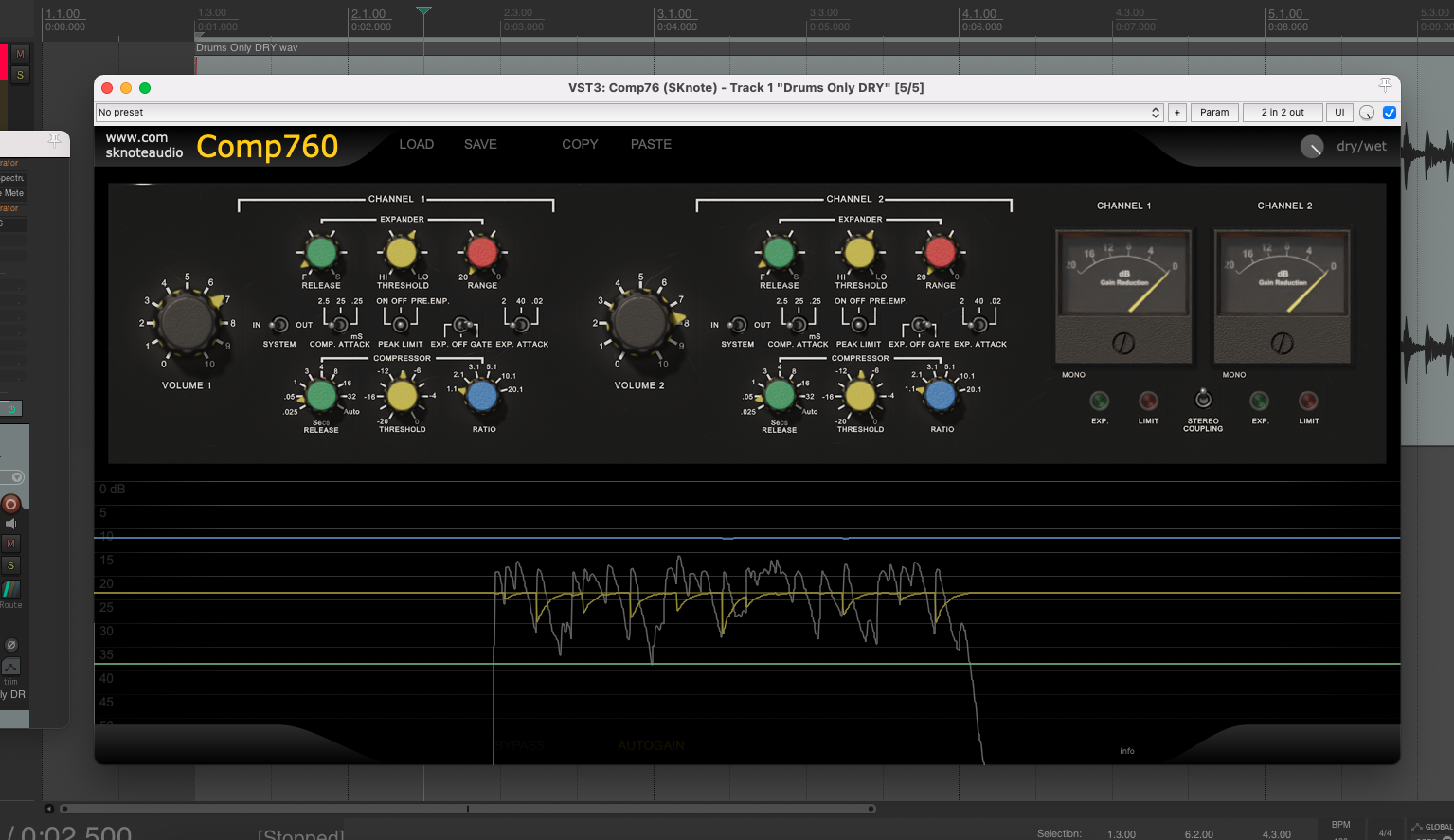
- Hardware-like interface, with controls and analog-style metering.
- Additional digital metering graph.
The graph is extremely useful for a total view on the settings and the behaviour of the unit. Input signal’s envelope (post-Gain) is monitored and the action of the unit is transparently visible on any passage.
Blue for the Limiter, Yellow for the Compressor, Green for the Expander.
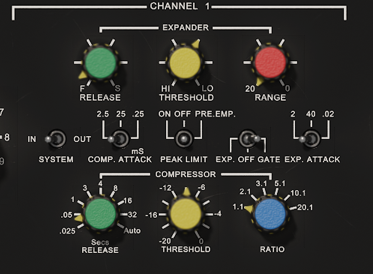
Each set of controls include:
- Compressor: Threshold, Attack time (discrete), Release time (continuous), Ratio (discrete).
- Expander: Threshold, Mode (Expand or Gate), Attack time (discrete), Release time (continuous), Range of action (beyond which it goes back to 1:1 ratio).
- Limiter: Mode (normal or with pre-emphasis).
The meter shows the action of the Compressor, only. The LEDs show when the Gate and the Limiter, respectively, are working.
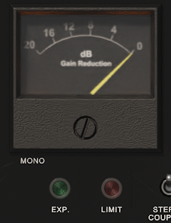
Mixing two versions of a signal together can introduce artefacts due to phase relationships between the two versions of the signal.
Comp760 includes a sample-aligned Dry/Wet mix control, for an easy and effective parallel-compression without any phase issue.
You can download a fully-functional, 14 days demo HERE (requires internet connection).
